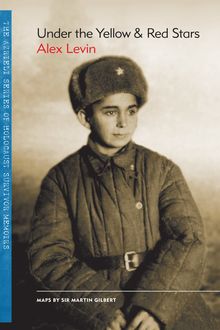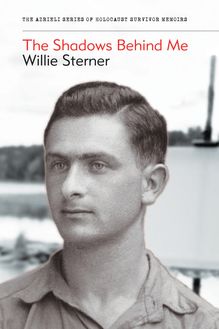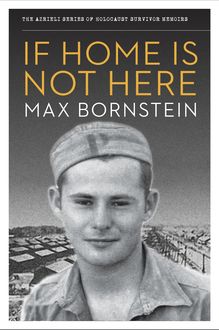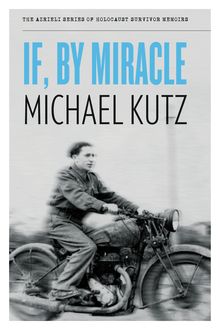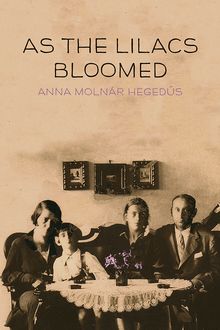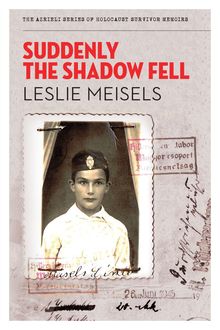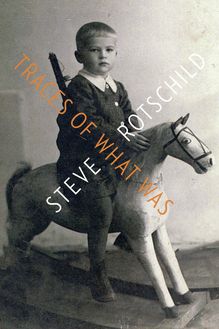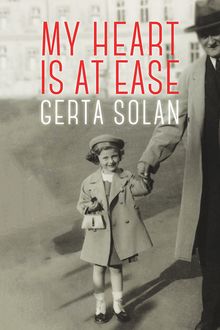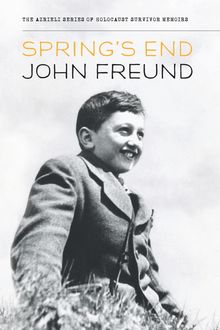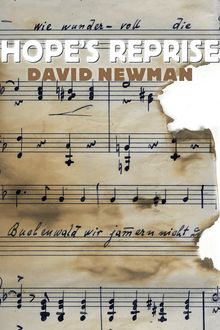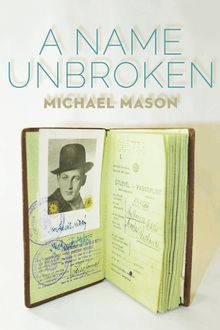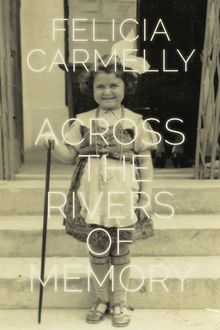-
 Univers
Univers
-
 Ebooks
Ebooks
-
 Livres audio
Livres audio
-
 Presse
Presse
-
 Podcasts
Podcasts
-
 BD
BD
-
 Documents
Documents
-
- Cours
- Révisions
- Ressources pédagogiques
- Sciences de l’éducation
- Manuels scolaires
- Langues
- Travaux de classe
- Annales de BEP
- Etudes supérieures
- Maternelle et primaire
- Fiches de lecture
- Orientation scolaire
- Méthodologie
- Corrigés de devoir
- Annales d’examens et concours
- Annales du bac
- Annales du brevet
- Rapports de stage
La lecture à portée de main
Vous pourrez modifier la taille du texte de cet ouvrage
Découvre YouScribe en t'inscrivant gratuitement
Je m'inscrisDécouvre YouScribe en t'inscrivant gratuitement
Je m'inscrisEn savoir plus
Vous pourrez modifier la taille du texte de cet ouvrage
En savoir plus

Description
Sujets
Informations
| Publié par | Azrieli Foundation |
| Date de parution | 01 septembre 2014 |
| Nombre de lectures | 1 |
| EAN13 | 9781897470848 |
| Langue | English |
| Poids de l'ouvrage | 1 Mo |
Informations légales : prix de location à la page 0,0300€. Cette information est donnée uniquement à titre indicatif conformément à la législation en vigueur.
Extrait
W Hour
Arthur Ney
The Azrieli Series of Holocaust Survivor Memoirs
INTERNATIONAL ADVISORY COUNCIL
Doris Bergen, Chancellor Rose and Ray Wolfe Chair in Holocaust Studies, University of Toronto
Sara R. Horowitz, Director of the Israel and Golda Koschitzky Centre for Jewish Studies, York University
Nechama Tec, Professor Emerita of Sociology, University of Connecticut
Avner Shalev, Chairman of the Yad Vashem Directorate, Jerusalem
Naomi Azrieli, Publisher
Andrea Knight, Managing Editor
Jody Spiegel, Program Director
Arielle Berger, Editor
Elizabeth Lasserre, Senior Editor, French-Language Editions
Aurélien Bonin, Assistant Editor / Researcher, French-Language Editions
Elin Beaumont, Educational Outreach and Communications
Tim MacKay, Social Media and Marketing
Susan Roitman, Executive Coordinator (Toronto)
Mary Mellas, Executive Coordinator (Montreal)
Michaela Ryan, Program Assistant
Mark Goldstein, Art Director
Nicolas Côté, Layout, French-Language Editions
François Blanc, Cartographer
Contents
The Azrieli Series of Holocaust Survivor Memoirs
Series Preface: In their own words...
About the Glossary
Introduction
Maps
Dedication
Author’s Preface
The Calm Before the Storm
The Beginning of the End
Persecution
Struggle for Survival
Brushes with Death
Exit
Franciszek’s Farm
Return to Warsaw
A New Beginning
The Warsaw Uprising
Surrender and Flight
Occupation Again
Finding Family
The Decision
Glossary
Photographs
Copyright
About the Azrieli Foundation
Also Available
Series Preface: In their own words...
In telling these stories, the writers have liberated themselves. For so many years we did not speak about it, even when we became free people living in a free society. Now, when at last we are writing about what happened to us in this dark period of history, knowing that our stories will be read and live on, it is possible for us to feel truly free. These unique historical documents put a face on what was lost, and allow readers to grasp the enormity of what happened to six million Jews – one story at a time.
David J. Azrieli , C.M., C.Q., M.Arch
Holocaust survivor and founder, The Azrieli Foundation
Since the end of World War II , over 30,000 Jewish Holocaust survivors have immigrated to Canada. Who they are, where they came from, what they experienced and how they built new lives for themselves and their families are important parts of our Canadian heritage. The Azrieli Foundation’s Holocaust Survivor Memoirs Program was established to preserve and share the memoirs written by those who survived the twentieth-century Nazi genocide of the Jews of Europe and later made their way to Canada. The program is guided by the conviction that each survivor of the Holocaust has a remarkable story to tell, and that such stories play an important role in education about tolerance and diversity.
Millions of individual stories are lost to us forever. By preserving the stories written by survivors and making them widely available to a broad audience, the Azrieli Foundation’s Holocaust Survivor Memoirs Program seeks to sustain the memory of all those who perished at the hands of hatred, abetted by indifference and apathy. The personal accounts of those who survived against all odds are as different as the people who wrote them, but all demonstrate the courage, strength, wit and luck that it took to prevail and survive in such terrible adversity. The memoirs are also moving tributes to people – strangers and friends – who risked their lives to help others, and who, through acts of kindness and decency in the darkest of moments, frequently helped the persecuted maintain faith in humanity and courage to endure. These accounts offer inspiration to all, as does the survivors’ desire to share their experiences so that new generations can learn from them.
The Holocaust Survivor Memoirs Program collects, archives and publishes these distinctive records and the print editions are available free of charge to libraries, educational institutions and Holocaust-education programs across Canada. They are also available for sale to the general public at bookstores.
The Azrieli Foundation would like to express appreciation to the following people for their invaluable efforts in producing this book: Sherry Dodson (Maracle Press), Sir Martin Gilbert, Farla Klaiman, Malcolm Lester, David Ney, and Margie Wolfe and Emma Rodgers of Second Story Press.
About the Glossary
The following memoir contains a number of terms, concepts and historical references that may be unfamiliar to the reader. For information on major organizations; significant historical events and people; geographical locations; religious and cultural terms; and foreign-language words and expressions that will help give context and background to the events described in the text, please see the Glossary .
Introduction
“My family was gone. I was alive but alone in the world, and had to do something to survive. I congratulated myself for having outwitted the Germans and the other antisemites whose paths I had crossed during the occupation, but I knew I had to continue to hide my identity – it was not yet possible to end my double life. I only saw a future for myself as Piotr Grodzieński.”
Germany’s unconditional surrender to the Allies in May 1945 did not spell an end to Piotr Grodzieński’s troubles. The adolescent Grodzieński, a student and resident of a Catholic orphanage in Poland, had guarded a very dangerous secret since 1943. He feared revealing, even to his closest friends, that he was actually – or perhaps more accurately, also – Artur Ney, a sixteen-year-old Jew. He was one of an estimated 5,000-20,000 Jews in the liberated territories in the newly independent Polish state who continued to live under false identities they had assumed during the war. 1
While confined to the Warsaw ghetto in the early 1940s, Artur Ney’s father had providentially purchased for him the baptismal certificate of a boy who had been murdered by the Germans. But the then twelve-year-old Artur, who had developed a knack for smuggling wares in and out of the ghetto, gave no thought to Piotr Grodzieński’s document until he found himself caught on the “Aryan” side of the city in April 1943. Unable to return to his family, he watched from the distance as the ghetto’s inhabitants rose in a final stand against the Germans rather than face deportation to Treblinka. Alone in the world, he thereafter clung to Grodzieński’s identity as his only protection, even a year and a half after the war had ended.
By this time, however, many of the features of his assumed identity were no longer fictive: he had indeed lost his parents, in addition to many others in his large and close-knit family. He had also converted to Catholicism, a decision he justified to himself as necessary to protect his life despite misgivings that such an act – traditionally viewed by Jews as a form of betrayal of both God and the Jewish people – would have dismayed his family. Moreover, he was quite pleased with some aspects of his new identity, such as the Polish non-Jewish friends he had made, the “un-Jewish” skills he had acquired while working for farming families, the responsibilities with which he was entrusted by the priests, and the privilege of attending a humanities high school ( gimnazjum ).
When Artur began writing his memoir in the fall of 1946, Nazi persecution of Jews had ended, a communist-dominated government discouraged public expressions of antisemitism, and surviving Jews in Poland were encouraged by authorities to come out of hiding. He was, nonetheless, acutely aware that anti-Jewish feeling, prevalent throughout Polish society before the war, had if anything become radicalized by the experience of almost six years of brutal German occupation, which had both preached the complete dehumanization and murder of Jews, and criminalized assistance to them. Evidence of this could be found in the hostile and frequently violent behaviour that greeted surviving Jews, often at the hands of their former neighbours, as they returned home. A pogrom that resulted in more than forty Jewish fatalities in the city of Kielce in July 1946 was but the most dramatic illustration of such sentiments. 2 Further, the new pro-Soviet regime, lacking strong support among ethnic Poles, relied heavily on Jews to fill clerical and administrative functions. This only strengthened the existing stereotype linking Jews to communism, providing yet another reason for Artur to conceal his identity. As he reports, many a Pole resented the fact that dealing with civil servants after the war to obtain basic necessities meant “going to them,” a reference to Jews who had survived in the USSR and returned as soldiers with the conquering Red Army.
Perpetuating a double identity weighed as heavily upon Artur’s conscience as the anxiety of being discovered to be a Jew oppressed him. He began this memoir, a riveting tale of survival, loss and ambivalence, for fear of forgetting family and friends who had perished. He abbreviated names in order to veil them from his peers, whom he did not fully trust. He completed the memoir decades later not in Poland but in the safety of distant Canada, years after coming to some kind of peace with his very complicated feelings toward his native land. Its
-
 Univers
Univers
-
 Ebooks
Ebooks
-
 Livres audio
Livres audio
-
 Presse
Presse
-
 Podcasts
Podcasts
-
 BD
BD
-
 Documents
Documents
-
Jeunesse
-
Littérature
-
Ressources professionnelles
-
Santé et bien-être
-
Savoirs
-
Education
-
Loisirs et hobbies
-
Art, musique et cinéma
-
Actualité et débat de société
-
Jeunesse
-
Littérature
-
Ressources professionnelles
-
Santé et bien-être
-
Savoirs
-
Education
-
Loisirs et hobbies
-
Art, musique et cinéma
-
Actualité et débat de société
-
Actualités
-
Lifestyle
-
Presse jeunesse
-
Presse professionnelle
-
Pratique
-
Presse sportive
-
Presse internationale
-
Culture & Médias
-
Action et Aventures
-
Science-fiction et Fantasy
-
Société
-
Jeunesse
-
Littérature
-
Ressources professionnelles
-
Santé et bien-être
-
Savoirs
-
Education
-
Loisirs et hobbies
-
Art, musique et cinéma
-
Actualité et débat de société
- Cours
- Révisions
- Ressources pédagogiques
- Sciences de l’éducation
- Manuels scolaires
- Langues
- Travaux de classe
- Annales de BEP
- Etudes supérieures
- Maternelle et primaire
- Fiches de lecture
- Orientation scolaire
- Méthodologie
- Corrigés de devoir
- Annales d’examens et concours
- Annales du bac
- Annales du brevet
- Rapports de stage
